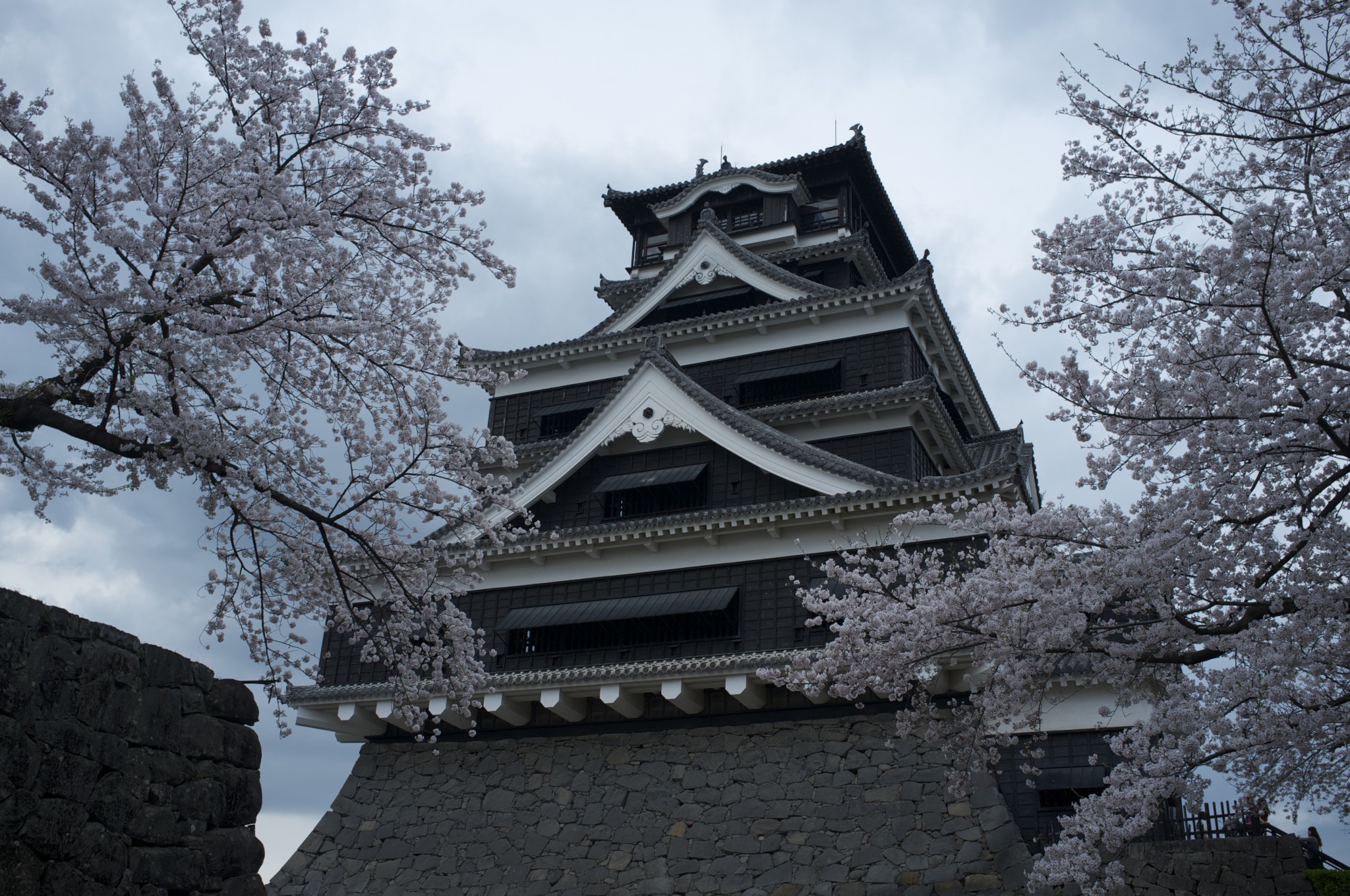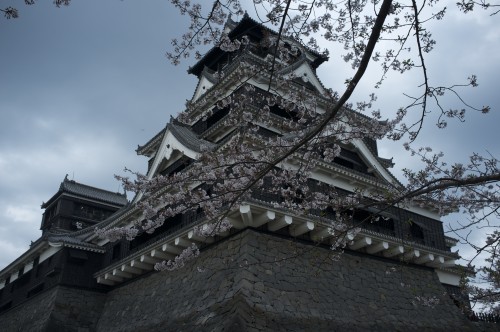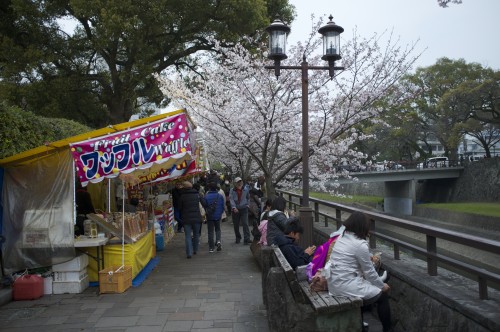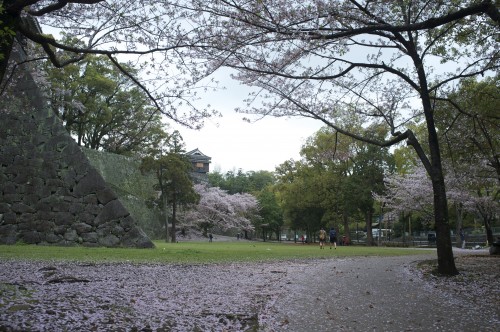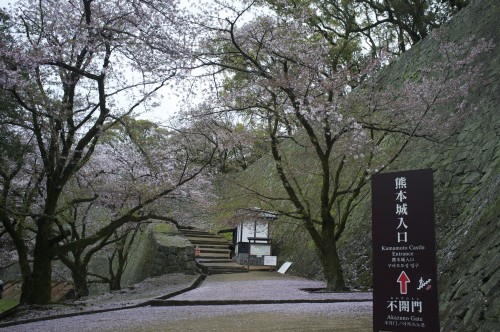Although it only lasts a short two to three weeks, cherry blossom viewing (hanami) is one of Japan’s most famous seasonal activities. Kyushu is the first of Japan’s main islands to experience the blossoms annually, making its central city of Kumamoto a popular destination among spring breakers across Japan and internationally. Though cherry blossom trees are scattered in swaths throughout the entirety of Kumamoto City, Kumamoto Castle is regarded as the best location to enjoy hanami. Given their short bloom span, cherry blossoms (sakura) are revered in Japanese culture as a symbol of mono no aware (“the transience of things”) – a principal that emphasizes the beauty of ephemerality. What better place to celebrate this, than at a castle that has been burned down, and rebuilt from the ground up.
For Kumamoto city, these few weeks of cherry blossoms typically occurs from the last week of March until the second week of April. Kumamoto Castle boasts approximately 600 cherry blossom trees among its grounds, making it no struggle to find a spot to bask beneath the falling petals. It’s a customary part of hanami to gather a group of friends, family, or coworkers, bring a bento (and optionally, some saké), and enjoy a picnic amid the cherry blossom trees. However, those who aren’t ambitious enough to pack a lunch will also be in luck, as there’s a stretch along the moat of the castle that’s lined with various food stalls, as well as its own row of cherry blossom trees. These sell a number of foods, from waffles to grilled squid, providing a partially-authentic and thoroughly eclectic Japanese street food experience.
Those looking for some heavier fare may wish to check within the gates of Sakura no Baba Josaien castle town, where there are a number of traditional Japanese food restaurants. If you’re feeling particularly brave, you may wish to try the seasonally-appropriate “Sakura meat” – a synonym for one of Kumamoto’s local specialties, basashi (raw horse meat). Earning the second moniker for its pink colour, Sakura meat is professed to be a delicacy by locals and tourists alike, renowned for its lean yet rich consistency. Needless to say, it’s not for vegetarians or those sentimental around farm animals. For those less adventurous, these restaurants and vendors offer a number of other delicious foods, centred around seasonal flavours such as sakura and strawberry.
In addition to their historical significance, the castle grounds are blessed with a bounty of ideal picnicking areas. Although cherry blossoms also bloom within gardens beyond the paid-access areas of the Kumamoto castle, the prime locations for picnicking and other more leisurely hanami activities are the surrounding castle grounds, which are open to the public free of admission. The castle grounds feature no shortage of lush, grassy areas, as well as fields at higher grounds, which provide the ideal setting for an afternoon among the blossoms.
Visitors from around the world come during this time to see the castle at its prime beauty, as the surrounding gardens, and parks are rife with plum and cherry blossom trees. Unfortunately, Kumamoto has endured a particularly rainy spring thus far, taking some of the cherry blossoms with it, and so guests looking to make the visit to Kumamoto city and this stunning castle for hanami are encouraged to come as soon as possible.
Admission to the central castle is 500 yen for high school students and older, 400 for groups, and 160 yen for children. There’s no admission fee for Sakura no Baba Josaien market, or the surrounding parks. Kumamoto Castle is accessible by taking either Kumamoto City Tram lines to either Kumamoto Castle/City Hall (for Sakura no Baba Josaien, and the surrounding grounds) or Torichosuji (for the paid admission entrance).


